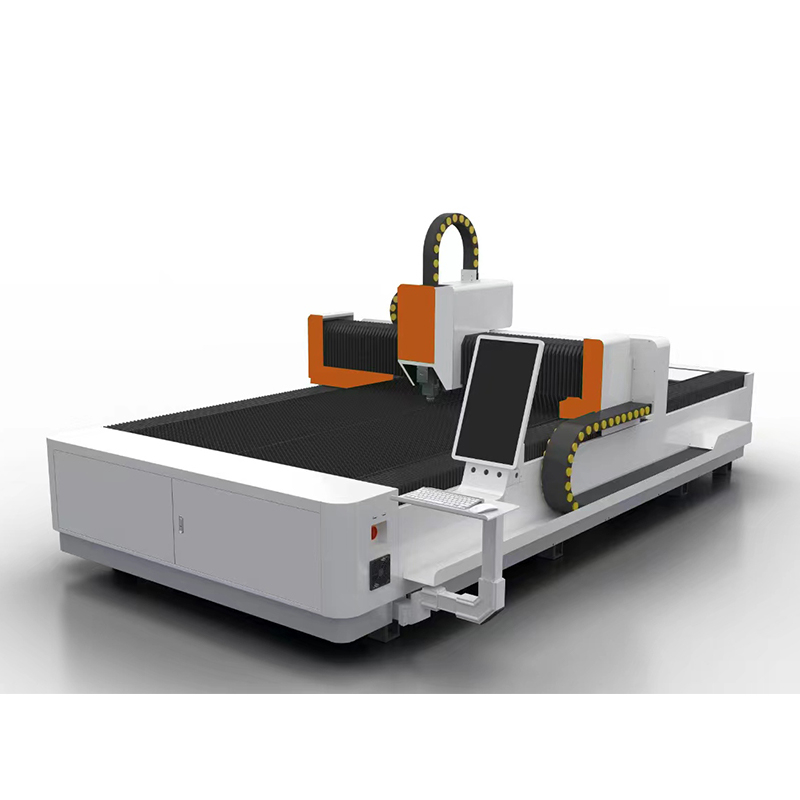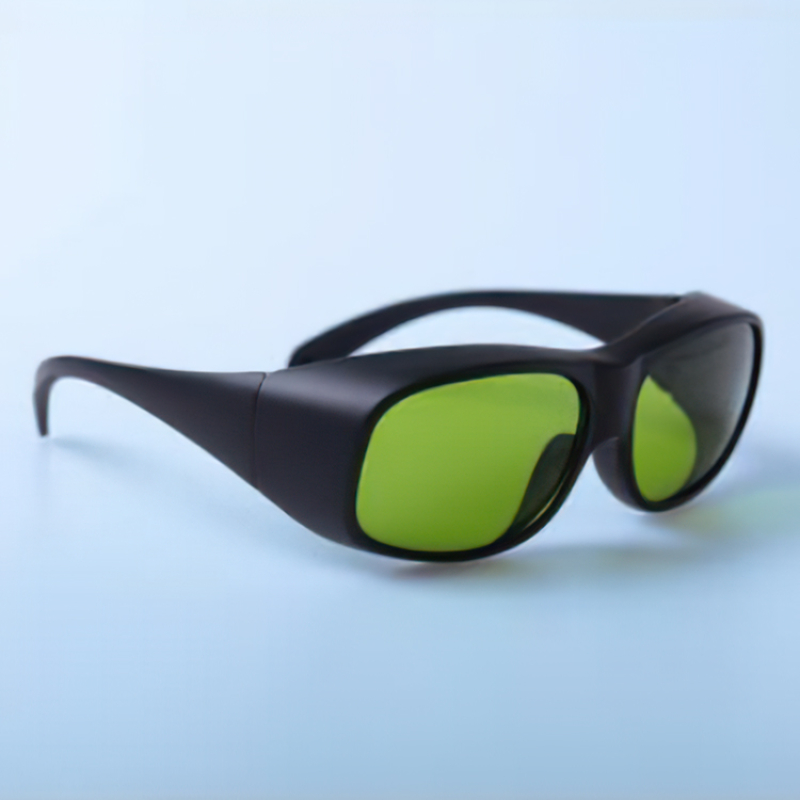The fiber laser cutting machine is a type of laser cutting equipment that utilizes a fiber laser generator as its light source.A fiber laser incorporates pumping material into the fiber. When a specific wavelength of laser emitted by a semiconductor laser is coupled, it causes the fiber to generate laser light, which is then focused onto the surface of the workpiece. The area of the workpiece illuminated by the laser spot locally melts and vaporizes instantaneously.
Contact Now
Optical Fiber Laser Marker-Miniature can achieve micrometer-level marking precision, meeting the requirements of applications where high marking fineness is needed.The laser beam does not have direct contact with the workpiece surface, avoiding potential physical damage and deformation caused by traditional marking methods.It can be used for marking a variety of materials, including metals, plastics, ceramics, glass, and more.High flexibility: Customizable engraving content, including fonts, sizes, depths, positions, etc., to meet personalized needs.It is usually equipped with a computer
Contact Now
Laser Safety Window is specialized panels crafted to effectively block and absorb laser light, minimizing potential harm to human eyes and skin. They are extensively utilized in fields such as laser processing, medical treatment, and scientific research, ensuring the safety of operators and patients by effectively shielding them from laser exposure. These windows foster a secure working environment, boosting work efficiency and quality by alleviating concerns related to laser hazards.
Contact Now
The QBH protective cap is vital in fiber laser cutting machines, shielding the laser's crystals and output window from dust, dirt, and contaminants. It prevents damage from metal splashes and impurities, ensuring long service life. Made of high-quality, heat-resistant, corrosion-resistant, and wear-resistant materials, it effectively protects the laser.
Contact Now
The QBH protective cap is an important protective device used in fiber laser cutting machines. It primarily protects the laser's crystals and output window. During the laser cutting process, the protective cap prevents dust, dirt, and other impurities from entering the laser's interior, thereby maintaining the laser's performance and stability.
Contact Now
The QBH protective cap plays a crucial role in fiber laser cutting machines by safeguarding the laser's crystals and output window. It acts as a barrier against dust, dirt, and other contaminants during the cutting process, preserving the laser's performance and stability. Additionally, it protects the laser from damage inflicted by metal splashes and other impurities, thereby prolonging its service life.
Contact Now
The QBH protective cap is essential for fiber laser cutting machines, as it guards the laser's crystals and output window from dust, dirt, and contaminants. It safeguards against metal splashes and impurities, prolonging the laser's lifespan. Constructed from premium, heat-tolerant, corrosion-proof, and durable materials, it offers robust protection.
Contact Now
D16 Laser Collimating Lens:Laser Collimating Lens is an optical component used to focus the laser beam and maintain the stability and accuracy of the laser path. In laser cutting machines, laser measurement, and other laser processing applications, laser collimating lenses are employed to compress divergent laser beams into parallel beams, thereby enhancing the laser's penetration power and beam quality to ensure precise application of the laser onto the target workpiece. The working principle of a laser collimating lens is primarily based on the refraction of light by the lens.
Contact Now
A Laser Water Chiller is a tailored industrial device for the laser industry, utilizing a water-cooled system to maintain the laser generator's optimal temperature. It works by circulating water through the generator, leveraging water's thermal conductivity and the chiller's refrigeration process to efficiently remove heat.
Contact Now
A Laser Water Chiller is an industrial chiller specifically designed for the laser industry. It employs a water-cooled circulation system to regulate the operating temperature of the laser generator, ensuring sustained normal operation. By leveraging water's thermal conductivity and the chiller's refrigeration cycle, the chiller circulates cooling water through the laser generator to absorb heat and dissipate it externally via a condenser.
Contact Now
Laser protective glasses serve a vital role across various domains including industrial production, medical treatment, scientific research, and more.
Contact Now
A Laser Water Chiller is a custom-built industrial chiller for the laser industry, employing a water-cooling system to stabilize the laser generator's temperature. By circulating water and harnessing its thermal conductivity alongside the chiller's refrigeration mechanics, it efficiently draws off heat.
Contact Now
A Laser Water Chiller is a specialized industrial chiller designed for the laser industry. It uses a water-cooled system to keep the laser generator at an optimal temperature. By circulating water through the generator and utilizing both water's thermal conductivity and the chiller's refrigeration cycle, it effectively absorbs and dissipates heat externally.
Contact Now
Laser focus lens, also known as laser focusing mirrors or focusing lenses, are optical elements capable of adjusting the angle and focal point of a laser beam. They can converge a divergent laser beam into a small spot, thereby enhancing the laser beam's penetration and energy density. The working principle of laser focusing lenses is primarily based on light refraction and focusing effects. When a laser beam passes through the lens, the direction of beam propagation changes due to the influence of the lens material's refractive index and shape, achieving a focusing effect.
Contact Now
Sup Laser Sealing RingLaser sealing ring consists of a corrosion-resistant spring (typically a stainless metal spring) and a U-shaped filler cloth (usually PTFE or different high-performance polymeric materials) that together structure a sealing ring. This seal graph combines the homes of metallic and plastic (or polymeric material) to supply outstanding sealing effect.
Contact Now
Laser sealing ring consists of a corrosion-resistant spring (typically a stainless steel spring) and a U-shaped filler material (usually PTFE or other high-performance polymeric materials) that together form a sealing ring.
Contact Now
Laser sensor is an important component in laser equipment or additive manufacturing equipment, primarily used in laser cutting and cladding processes. It rapidly scans the coating with a high-energy laser beam, causing the preset powder to melt and solidify instantaneously, while the base metal melts into a thin layer. Within a narrow region, the interface between the two rapidly undergoes molecular or atomic-level interdiffusion, forming a strong metallurgical bond.
Contact Now
The laser sensor is a crucial part of laser and additive manufacturing equipment, particularly in laser cutting and cladding processes. It uses a high-energy laser beam to scan the coating, melting and solidifying the preset powder instantly, while the base metal melts into a thin layer.
Contact Now
Laser Safety Window is specialized panels that block and absorb laser light to safeguard human eyes and skin. Utilized across laser processing, medical treatments, and research, they shield operators and patients from laser exposure. These windows foster a secure work environment, enhancing efficiency and quality by mitigating laser hazards. They also guard against equipment damage and losses caused by laser reflections or leaks. Offered in various protection levels, they can be tailored to meet specific requirements, with higher levels providing superior protection.
Contact Now
Laser protective glasses play a crucial role in multiple fields, including industrial production, medical treatment, and scientific research. Their key advantages are highlighted as follows:Professional Protective CapabilitiesSpecific Wavelength Protection:Designed to shield against specific laser wavelengths, minimizing eye damage.
Contact Now
Laser sealing ring consists of a corrosion-resistant spring (typically a stainless metal spring) and a U-shaped filler cloth (usually PTFE or different high-performance polymeric materials) that together structure a sealing ring.
Contact Now
The laser nozzle is responsible for maintaining the distance between the laser head and the workpiece, guiding the auxiliary gas to pass smoothly through the workpiece being cut, and creating high pressure at the nozzle outlet to accelerate the cutting speed. It also carries away molten slag and protects the internal lenses of the laser head. It is an indispensable part of the laser cutting process and directly determines the quality of laser cutting.Single-layer nozzle: Nitrogen is used as the auxiliary gas.
Contact Now
The laser ceramic ring in a laser device is crucial for connecting the laser head and body. Made of heat and corrosion-resistant alumina ceramic, it acts as a buffer to reduce stress from mismatched thermal expansion coefficients, strengthening the connection. The high energy and temperature within the device require robust internal materials, and the alumina ceramic body of the laser head meets this challenge, enduring high-temperature, high-energy lasers without damage.
Contact Now
A Laser Water Chiller is a dedicated industrial chiller for the laser industry, employing a water-cooled system to regulate the laser generator's temperature. It circulates water through the generator, leveraging water's thermal conductivity and the chiller's refrigeration process to absorb and externally dissipate heat.
Contact Now



































